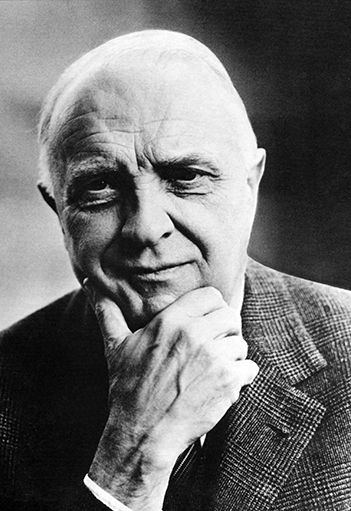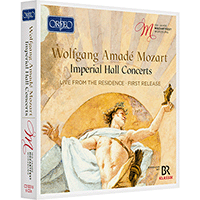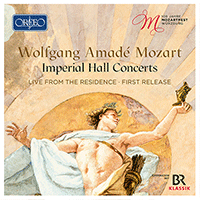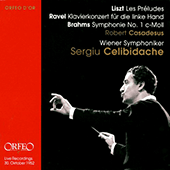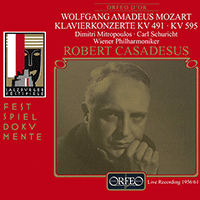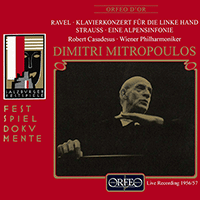Robert Casadesus
Robert Casadesus came from a musical family: his uncle Francis (1870–1954) was a conductor and composer, his uncles Henri (1879–1947) and Marius (1892–1981) founded the Société Nouvelle des Instruments Anciens, violist Henri and cellist Marcel (1882–1914), who was killed in World War I, played with the Capet Quartet. At his birth Robert was abandoned by his mother, an acting student, and left to his father, an actor whose stage name was Robert Casa. The parents were never married and the child was raised by his Aunt Rose, herself a pianist. In 1912 Casadesus joined the class of Louis Diémer at the Paris Conservatoire, winning a premier prix at the age of fourteen. Six years later he won another premier prix, this time for harmony, and a year later won the Diémer Prize.
In 1921 Casadesus married Gabrielle L’Hôte (1901–1999), also a pupil of Diémer, with whom he worked as a two piano team, and in the same year he gave the première of Fauré’s Fantaisie for Piano and Orchestra which he had studied with the composer. During his first tour of Europe he met many musicians including Roussel, Falla, Schmitt and Ravel (with whom he worked from 1922), giving a recital of that composer’s works in 1924 at the Salle Pleyel. After the recital Ravel wrote to him, ‘Did I mention the other evening that the Jeux d’eau (among others) has never been as well played?’ It was Ravel who asked Casadesus to perform with him in Spain and England, and Honegger dedicated the last of his Sept pièces brèves to him in 1920. In 1929 Casadesus toured Russia giving fifteen concerts in Moscow; thereafter he toured much of the world visiting Africa, the Middle East, Japan, North and South America, and Canada.
By the early 1930s Casadesus was also gaining a reputation as a composer. His first compositions date from 1916; his Préludes for Piano were published in 1932 and he gave the first performance of his Concerto for Two Pianos with his wife in Warsaw. His compositions would eventually include four sonatas and twenty-four preludes for piano, seven symphonies, three piano concertos, a violin concerto, a cello concerto, four string quartets, four string trios, a sextet and a septet; some of these works he would record for Columbia later in his career. In 1935 Casadesus was appointed professor at the American Conservatory in Fontainebleau, but he also taught privately throughout his life, notable pupils being Monique Haas and Claude Helffer.
Casadesus played Brahms’s Piano Concerto No. 2 Op. 83 with Toscanini in New York and returned to America annually, residing there with his family during World War II. He returned to France in 1946 becoming director of the American Conservatory, and in 1948 his Piano Concerto No. 2 had its première with the New York Philharmonic and Leopold Stokowski. During the 1950s and 1960s Casadesus continued his performing and recording career, often working with violinist Zino Francescatti with whom he collaborated from 1942. In 1963 he toured Japan and in 1971 celebrated his fifty years as a concert pianist. His son, Jean, was killed in a car accident in 1972 and Robert died shortly afterward. He was made a member of the Légion d’honneur, and in Belgium was made a Commander of the Order of Leopold.
Casadesus recorded for Columbia throughout his life and made his first discs in Paris in 1928. These earliest sessions produced exemplary versions of Chopin’s four ballades and the Études Symphoniques Op. 13 of Schumann. All these were recorded before Casadesus was thirty, yet they have an uncanny sense of style and maturity about them, the ballades being one of the best versions on disc. A recording of Fauré’s Quartet No. 1 Op.15 with the Calvet Quartet from 1935 is a good example of his chamber work. While in New York during the war he recorded some Ravel including a particularly fine Sonatine, and from this time recordings of Mozart, Franck and Weber with Barbirolli and the New York Philharmonic give a good representation of Casadesus’s live performances. After the war Casadesus recorded prolifically, duplicating much repertoire as developments in sound recording improved. Highlights include his performances with Francescatti of sonatas by Beethoven, Fauré, Franck, and particularly Brahms, the live performances of which from 1947 and 1952 are passionate, involved, uninhibited and thrilling, making them one of the best versions available. Casadesus also recorded early keyboard music by Rameau, some Bach and Scarlatti sonatas: a group of eleven in 1937 and another group in 1952. Fortunately many duo recordings were made with his wife Gaby, the best of these being of the French repertoire including Fauré’s Dolly Suite Op. 56 and Debussy’s En blanc et noir. His best recordings with orchestra include the Concerto for Left Hand by Ravel, (he did not record the Concerto in G major), and an excellent Variations Symphoniques by Franck from 1958 with Eugene Ormandy. Other concertante pieces include works by Beethoven, Brahms, Falla, Mozart, Fauré, d’Indy, Saint-Saëns, Liszt and Weber. The Mozart concertos were recorded with George Szell and the Cleveland Orchestra, but Casadesus also recorded a few of these concertos before the war with various conductors such as Barbirolli, Munch and Bigot. Columbia also recorded Casadesus in the complete solo works of Debussy (minus the études) and Ravel, collections that still rank amongst the finest of these recorded works. In 2001 Columbia in France released twenty volumes of Casadesus’s (mainly post-war) recordings, yet there are still some pre-war recordings that need to be reissued.
Although much has been written about the elegance, fastidiousness and urbanity of Casadesus’ playing, he was not a pianist in the style of the famous French jeu perlé school. His playing, especially in the earlier recordings, is flavoured more with the Slavic sound of big tone and heroic sweep. Casadesus avoids the dry sound of some of his contemporaries and only played music with which he felt an affinity, resulting in each performance having a conviction of interpretation.
© Naxos Rights International Ltd. — Jonathan Summers (A–Z of Pianists, Naxos 8.558107–10).







